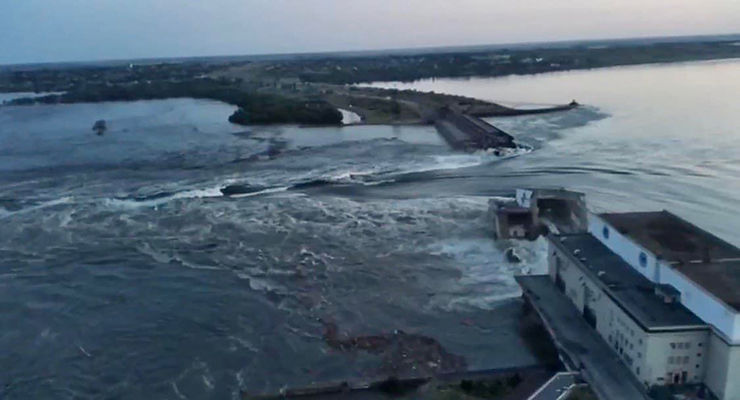By: James Li
In a turn of events, the Kakhovka Dam, a vital component of Kakhovka, Ukraine, collapsed at 2:35 am on June 6th, causing widespread destruction and claiming numerous lives. The catastrophic incident shocked the region and has left residents and authorities grappling with the aftermath of one of the worst infrastructure failures in recent history.
The Kakhovka Dam, situated on the Dnieper River, played a crucial role in flood control, hydroelectric power generation, and irrigation for agricultural activities in the surrounding area. Its failure has an immense environmental and humanitarian impact, affecting not only the immediate vicinity but also the larger communities downstream.
Local authorities have reported that the dam’s collapse resulted from a combination of heavy rainfall and structural weaknesses. “The catastrophic failure of its underlying concrete foundation was very unlikely to occur on its own and most likely was deliberately done,” says the NYT. Preliminary investigations suggest that years of failure to maintain the dam may have contributed to the disaster, however, officials say, “If your objective is to destroy the dam itself, a large explosion would be required,” said Michael W. West.
Immediate response efforts were shut down by the scale and suddenness of the catastrophe, as well as the challenging weather conditions. Rescue teams, emergency services, and volunteers rushed to the scene to evacuate trapped residents, provide medical assistance, and initiate search and rescue operations. The Ukrainian government, in coordination with international aid organizations, swiftly mobilized resources to support the affected communities.
The impact of the dam collapse is far-reaching, with reports indicating extensive damage to residential areas, critical infrastructure, and agricultural lands. Entire neighborhoods have been submerged, leaving homes and businesses destroyed or severely damaged. The loss of life and injuries resulting from the disaster is still being assessed, and the death toll is expected to rise as rescue operations continue.
Moreover, the breach of the Kakhovka Dam has caused significant disruption to the regional water supply, leading to concerns over access to clean drinking water and sanitation. The local authorities are working tirelessly to establish temporary water distribution points and implement measures to mitigate the risk of diseases as well.
The long-term consequences of this devastating event are yet to be fully understood. Efforts to repair and rebuild the dam will require substantial investment and careful planning. The affected communities will need extensive support to recover physically, emotionally, and economically.











